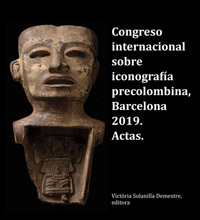Zea E-Books

Congreso internacional sobre iconografía precolombina, Barcelona, 2019. Actas.
Date of this Version
7-20-2020
Document Type
Article
Citation
Publicado en Congreso internacional sobre iconografía precolombina, Barcelona 2019. Actas, Victòria Solanilla Demestre, editora (Lincoln, Nebraska: Zea Books, 2020). https://doi.org/10.32873/unl.dc.zea.1257
Abstract
En este trabajo se analizan piezas producidas entre los siglos VII-XI, en el valle de Hualfín (Catamarca, Argentina) con fines cúlticos y ceremoniales, que presentan una iconografía de notable complejidad. Al respecto se propone indagar: el posible significado de las imágenes metafóricas y metonímicas que articulan humanos, felinos, saurios y reptiles, en relación al poder sagrado (lo waka) y, el rol que juega cada “tradición plástica” (escultores, grabadores, pintores) en la materialización, a través de los objetos e imágenes, del orden ontológico y cosmológico vigente en las comunidades del noroeste argentino en época prehispánica.
In this paper are analyzed pieces, produced during the Middle Period (600-1000 A.C) at Hualfìn Valley (Catamarca, Argentine Northwest), which were used in cults and ceremonies and presents a very complex iconography. In this regard it is proposed to inquire the possible meaning of images that articulate human beings, feline, saurus and reptiles, in relation to the sacred power (waka) and, the role played by each “plastic tradition” (sculptors, engravers, painters) in the materialization, through objects and images, of the ontological and cosmological order in force in the Argentine Northwest communities in pre-Hispanic times.
Included in
American Material Culture Commons, Indigenous Studies Commons, Museum Studies Commons, Other History of Art, Architecture, and Archaeology Commons, Other Languages, Societies, and Cultures Commons


Comments
Copyright 2020 por la autora.